MOOC: Auditing environmental impacts of infrastructure
2.2. Project Start Up

For the developer of a project, the main activity at this stage is conducting a feasibility study and a cost-benefit analysis (CBA). For the government, however, it is important that all of the planning procedures carried out at this stage are in accordance with the law.
Planning procedures are regulated by governments, and developers need to act in accordance with the law. The planning phase also involves environmental or sustainability assessments, which determine whether it is even possible to develop the infrastructure project at the chosen location, taking social, economic and environmental considerations into consideration.
At this stage of the project, auditors can check, for example, whether the developer has followed all of the planning procedures, involved the local citizens and relevant stakeholders in the process and determined the potential environmental impact.
Auditors can also analyse whether the feasibility study and CBA have been conducted in accordance with international standards and take all the necessary considerations into account. For example, it might be useful to check whether the CBA includes an environmental feasibility analysis and social considerations and the cost of alleviation measures for the environmental and social damage in addition to economic damage. Read more about what these different assessments should entail further on in this section.
Planning controls
In order to decide whether to continue with a potential infrastructure project, governments can regulate land use change through planning laws and regulations, i.e. use planning controls. It is possible to set conditions which must be met in order to receive planning permission. The issuer of a permit can request that the environment in the development area is not affected or negotiate social requirements, such as access roads or noise barriers. A planning law can also oblige the infrastructure developer to take compensatory actions or make payments to fund them, e.g. fund local community facilities, create additional green areas or provide a certain amount of free electricity to the local community from the newly built power station.
 | The planning process can be quite long and time-consuming. Local citizens usually have some say in what infrastructure is developed in their community during the planning proccess and/or in the course of environmental impact assessments. Thus, there are numerous examples from around the world where projects have been cancelled due to opposition from local citizens, be it due to noise pollution from a road being built, the potential bad smell from a new factory or not wanting the serenity of nature to be spoiled by the sight of wind power plants. |
Regulatory regime
The government puts a regulatory regime in place in order to ensure that the use of infrastructure has a minimal negative effect on the surrounding human and natural environments. Nevertheless, the regulatory regime should also guarantee that the infrastructure being built has the maximum positive effect on the surrounding human environment, e.g. accessible public transport and commodities. A regulatory regime has a direct impact on infrastructure development, operation and decommissioning.
Policy instruments that make up a regulatory regime can be divided into three broad categories:
- Administrative/regulatory instruments or command-and-control instruments, such as regulations, directives, bans, permits, etc., which are relatively inflexible.
- Market-based instruments, such as taxes, charges, deposit refund systems, levies, tradable permit schemes, subsidies, etc., which provide an incentive to make a change in the desired direction.
- Voluntary agreements and information strategies, such as bilateral agreements between governments and private entities, which are intended to morally persuade.
 | Reading suggestion!Read more about different policy instruments from the INTOSAI WGEA research paper ‘Market Based Instruments for Environmental Protection and Management’. |
Different policy instruments may apply depending on the type of infrastructure and its use and operation. The most widely used environmental policy instruments are presented below:
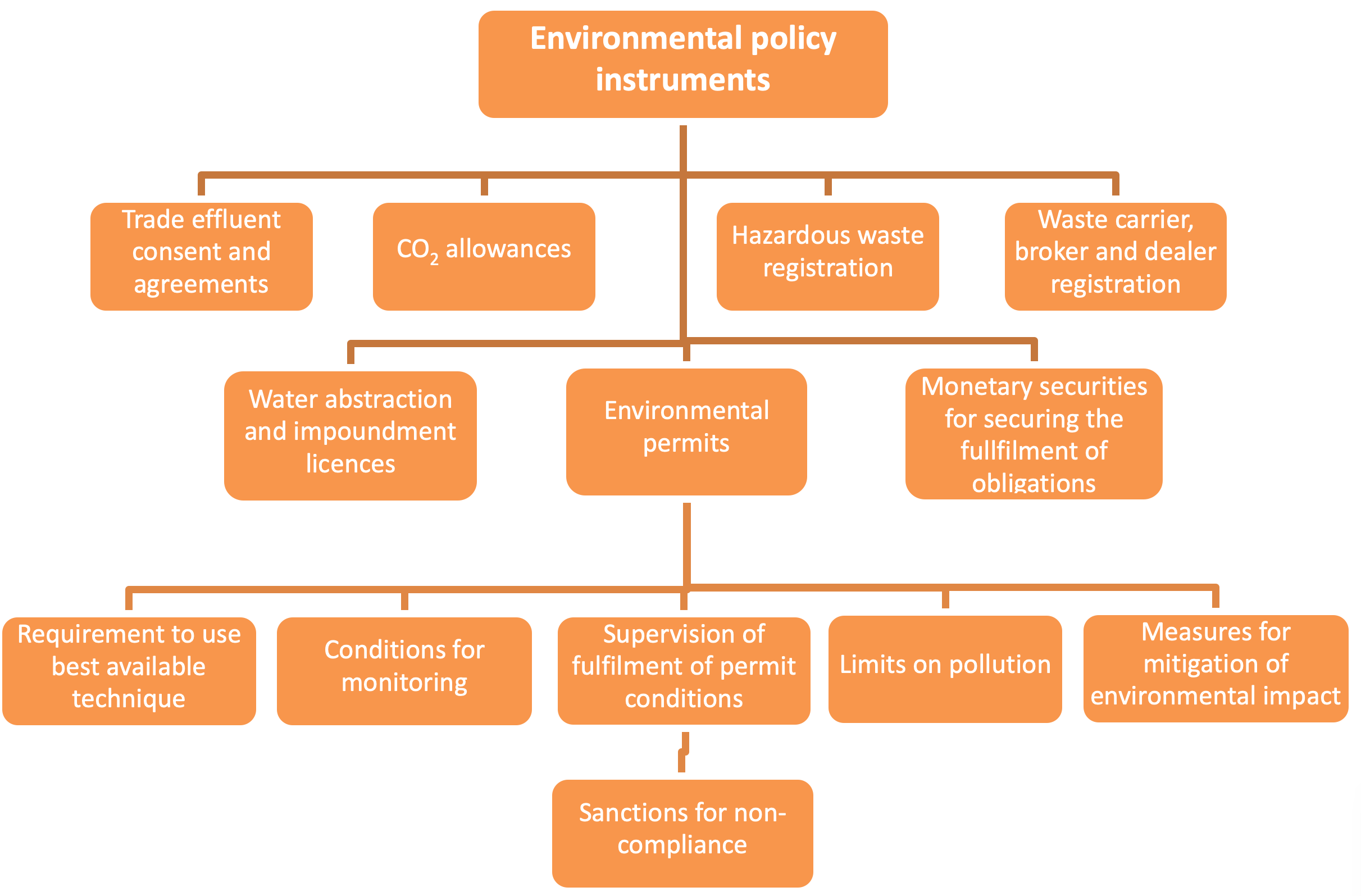
In many countries, governments issue different permits not only for planning and construction but also for operating infrastructure. Issuing permits allows the government to set the necessary conditions for operating the infrastructure and later monitor the fulfilment of these conditions. Environmental permits and agreements usually include but are not limited to:
- limits on pollution (EU legislation, national legislation, international treaties, etc.), measures for the mitigation of environmental impact;
- conditions for monitoring; or
- a requirement to use the best available technique.
In the case of large infrastructure monopolies, such as commodities, it is quite common for the state to regulate the price of the commodity, be it water, electricity or heat. This is done in order to protect the consumers who have to buy the commodity from a monopoly and do not have a choice of supplier.
Audit example:
‘The State’s efforts in ensuring the sustainability of heat supply’ (National Audit Office of Estonia, 2011)
The scope of the audit was to analyse whether the district heating sector is sustainable in Estonia. Sustainability was defined as follows:
- heating systems (boiler plants and pipelines) are well maintained
- district heating companies are self-sufficient
- boiler plants produce less air pollution
The audit consisted of these main questions:

The energy market can be monopolistic, which is why governments regulate end-consumer prices (i.e. approve tariffs). On the one hand, the purpose of tariff-setting is to protect consumers by controlling the expenses and profit margin of the energy company. On the other hand, the process has to maintain the sustainability of the company. In other words, the company must be able to invest in and maintain its energy systems.
The performance criteria for question 2 in the audit were set according to national legislation and the World Bank’s Tariff-setting Guidelines:
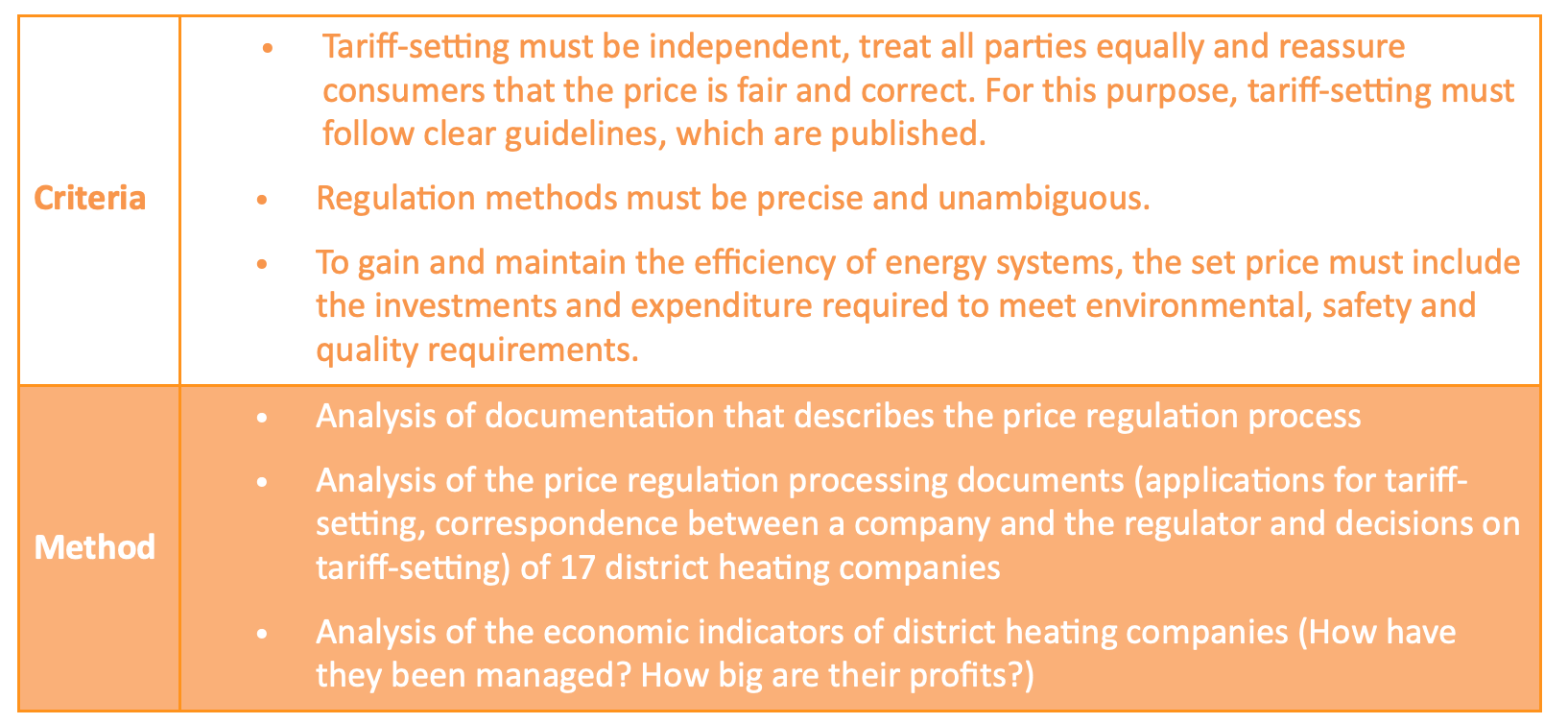
The state can also arrange supervision to make sure that the conditions of operating and environmental permits are fulfilled. The following example illustrates the auditing of the effectiveness of government actions.
Audit example:
‘Activities of the state in organising waste treatment in oil shale mining and processing’ (National Audit Office of Estonia, 2015)
In Estonia, the government had to close two landfills that were used for oil shale processing waste using EU taxpayers’ money. These sites were polluting the environment heavily. To avoid similar situations in the future, the Audit Office analysed whether existing regulations ensure that waste management sites will be closed by the companies that use them. The relevant audit question was formulated as follows:
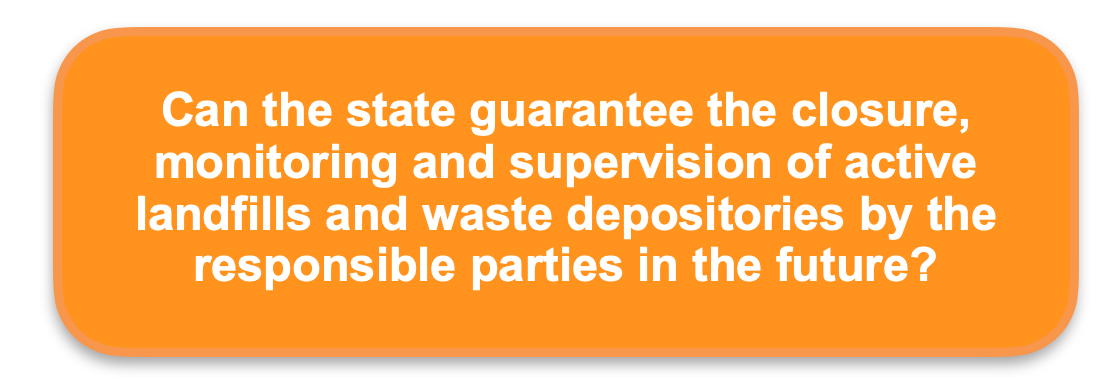
National legislation consists of the obligations of the landfill owner to close the landfill after using it. As such, the following criteria were set based on national legislation:
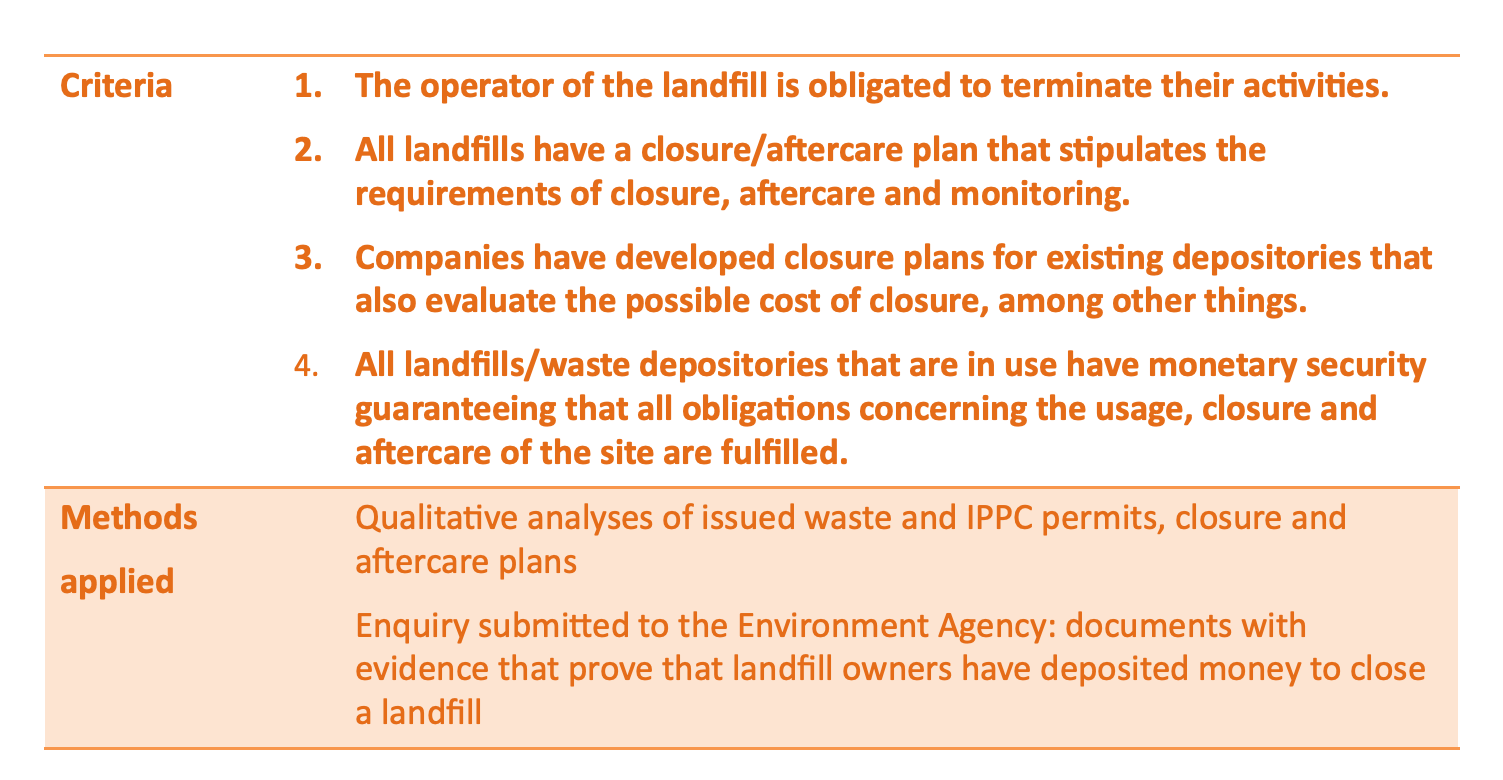
Impact assessment tools
There are a number of tools for assessing a project’s impact, several of which aspire to integrate the considerations of environmental, social and economic impact into the decision-making process. Some of the most common impact assessment tools are presented below.
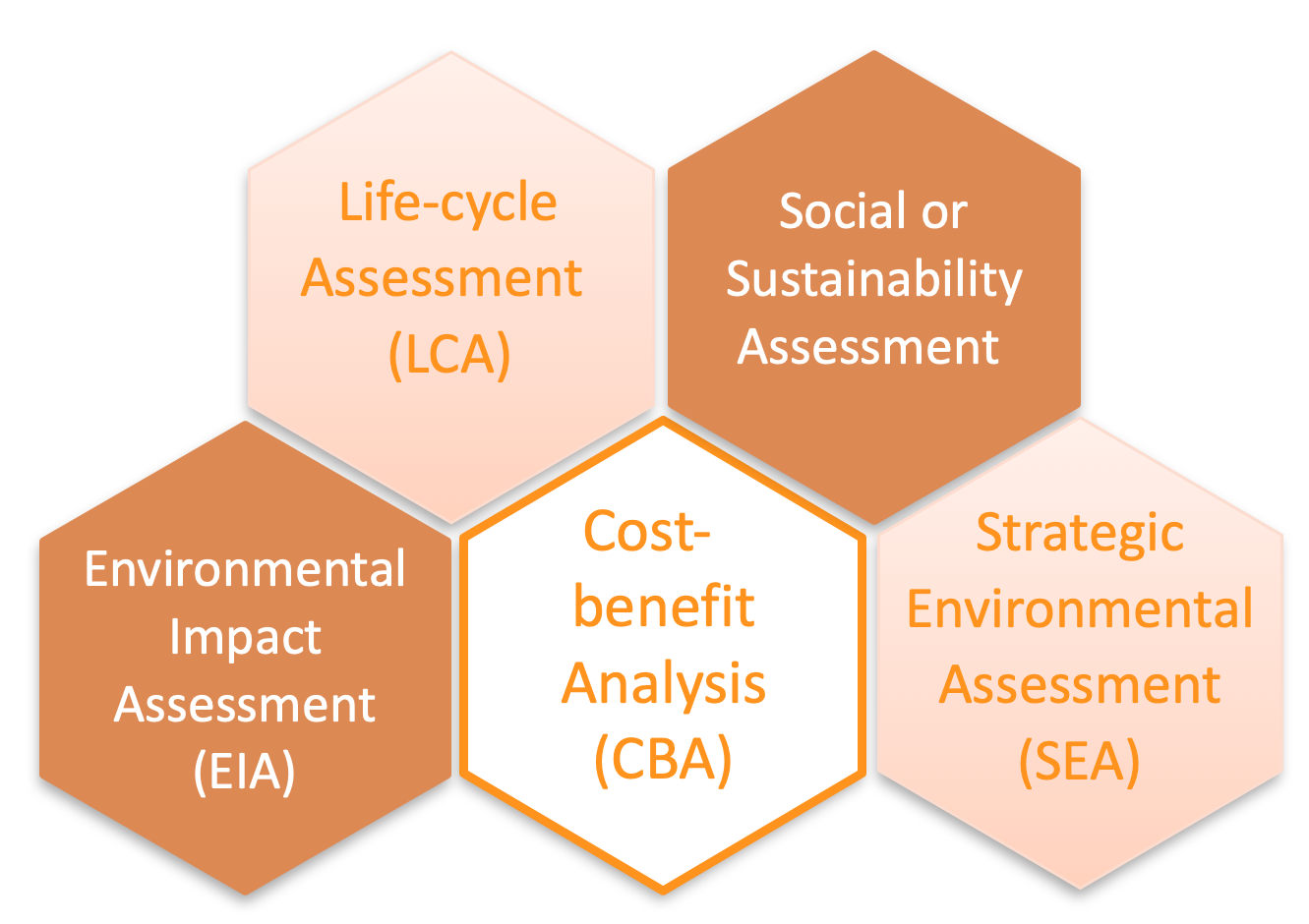
Note that the requirements for conducting impact assessments can vary from country to country. The following key aspects of impact assessments are often regulated by national law:
| Projects that need to be assessed (size of the project) | Conditions on how to make assessments (who makes the assessment and at which stage of a project) |
| Aspects of the environment likely to be significantly affected by the proposed project | Significant impact arising from the project, evaluation of alternatives |
| Measures for the prevention and mitigation of significant impact | Social and economic impact |
It is also important to note that Environmental Impact Assessments fall under the United Nations Economic Commission for Europe’s (UNECE) Convention on Access to Information, Public Participation in Decision-Making and Access to Justice in Environmental Matters, also known as the Aarhus Convention. The Convention establishes a number of rights of the public (individuals and their associations) with regard to the environment:
- The right of everyone to receive environmental information held by public authorities (“access to environmental information“). This can include information on the state of the environment, but also on policies or measures taken, or on the state of human health and safety where this can be affected by the state of the environment. Applicants are entitled to obtain this information within one month of the request and without having to say why they require it. In addition, public authorities are obliged, under the Convention, to actively disseminate environmental information in their possession.
- The right to participate in environmental decision-making. Arrangements are to be made by public authorities to enable the public affected and environmental non-governmental organisations to comment on proposals for projects affecting the environment or plans and programmes relating to the environment, to enable these comments to be taken into due account in decision-making and to provide information on the final decisions and the reasons for them (“public participation in environmental decision-making“).
- The right to review procedures to challenge public decisions that have been made without respecting the two aforementioned rights or environmental law in general (“access to justice“).
The following example shows how the EIA process and reports can be used in the auditing process.
Audit example:
“Environmental remediation of impacted areas in the town of San Antonio Oeste (Río Negro) (in Spanish)” (General Auditor of the Nation of the Argentine Republic, 2019)
The SAI of the Argentine Republic audited the management of the environmental remediation of the affected areas in San Antonio Oeste (SAO), which was carried out within the framework of the Subprogram II of the Mining Environmental Management (GEAMIN). The audit found that the remediation plan was not efficient. Among other things, there were weaknesses in the EIA study and the methodologies used. In addition, the audit found a lack of control by the competent authorities and professionals as well as insufficiency of funds for the remediation works. All of these factors combined did not allow for the improvement of the health of the population that the project was supposed to protect. Presented below are the audit questions, criteria and main conclusions.
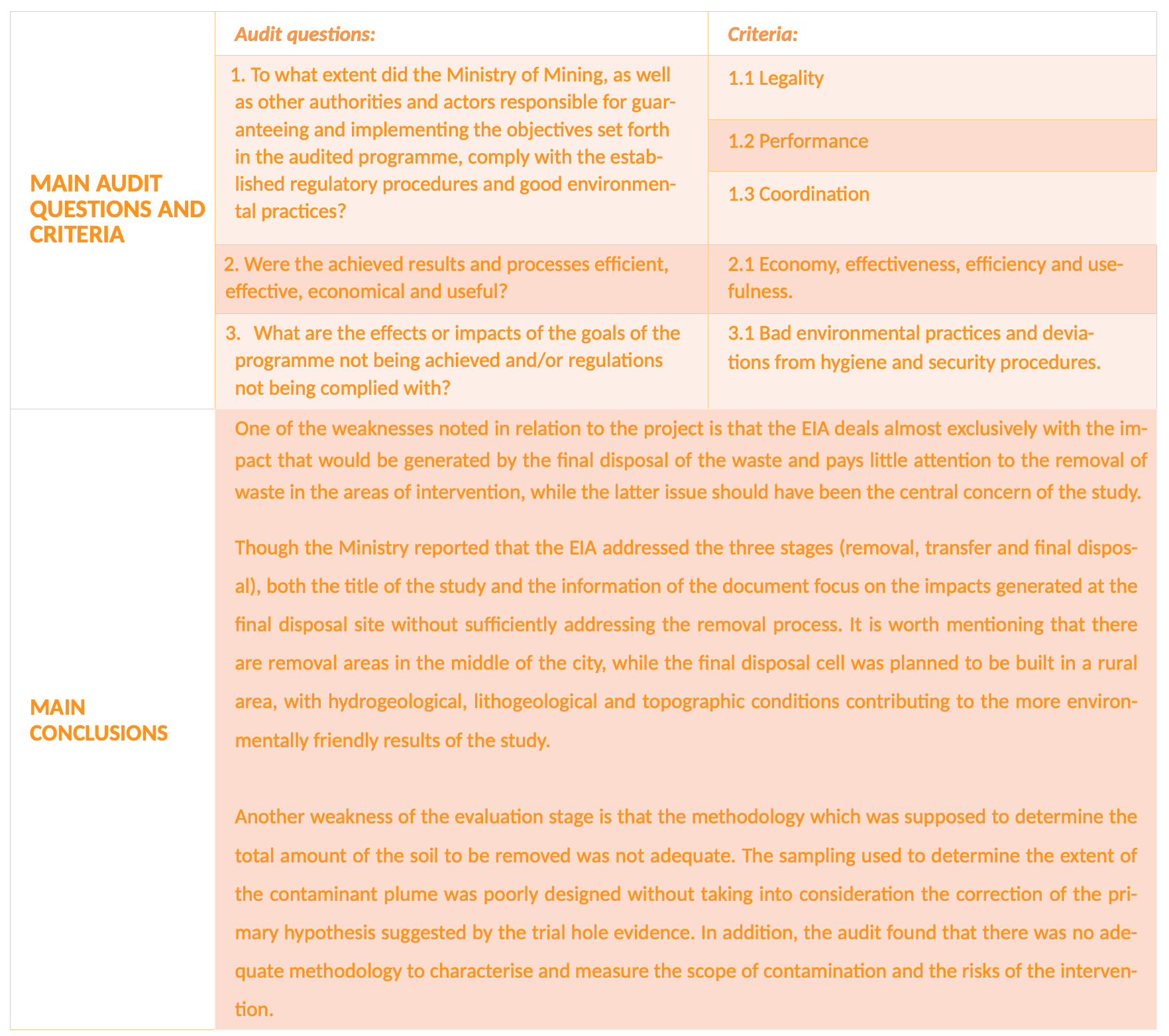
The most important impact assessment for determining the socio-economic impact is the Cost-Benefit Analysis or CBA. The CBA should also take into consideration the environmental factors determined in the EIA. One of the purposes of the CBA is to assign a (monetary) value (either a negative value/cost or positive value) to things and phenomena that do not have one. For example, the CBA should take into consideration the time and human lives saved by the construction of a new highway. However, it should also assign a value to the increase in emissions from the traffic flows on said new highway.
 | Reading suggestion!Read more about what aspects should be included in a CBA from the European Commission’s ‘Guide to Cost-Benefit Analysis of Investment Projects’. |
 |
Audit suggestion!Take a look at this audit by the European Court of Auditors, which looks at CBAs for major European cross-border transport projects. |

